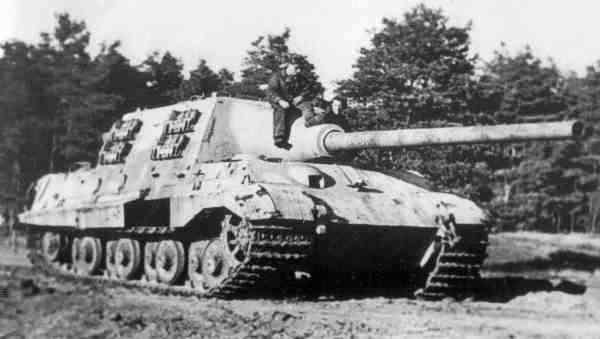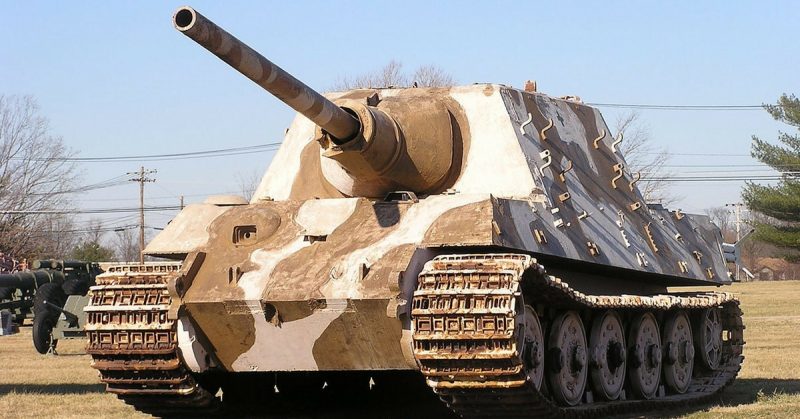The Herman Jagtiger tank destroyer was the heaviest armored vehicle produced during World War II. It weighed 72 tons and had a 128 mm gun. It was powered by an engine originally intended for a Tiger I tank.
The engine, powerful as it was, was the Jagtiger’s weakness – it was too weak for this massive vehicle. It was assigned to only two units, the 653rd, and 512th Heavy Panzerjäger Battalion, and only 80 were built.

The 512th Battalion was formed at Dollersheim in February 1945, with 20 tank destroyers. By 1945, the Allies were invading Germany itself, both from the east and the west, and the Germans needed powerful weapons to resist the Allied tanks.
It fought at the Battle of Remagen in 1945 and fought successfully, though it took ten days to reach the front on account of communication breakdowns and plane attacks.
In April 1945 the Battalion attacked many United States Sherman tanks. In the last attack, they destroyed 16 tanks and 30 other lightly–armored or unarmored targets. Some of the enemy tanks had been destroyed from a distance of two and a half miles.
The company of Jagtigers in this video belonged to the 512th Battalion. It was under the command of Hauptmann Albert Ernst. You can see them surrendering to the Americans. The date is April 15, 1945. They had been defending the German city of Iserlohn and lost only one Jagtiger. This had been destroyed by a squadron of Allied P-47 fighters. Nevertheless, knowing that defeat was inevitable, Ernst preferred to spare the city and his men rather than fight on.
You can see the Jagtigers, with armored trucks and personnel carriers move slowly through the town square to surrender to U.S. Army 9th Infantry Division. Civilians look on.
 Photo Credit."
title="
Photo Credit."
title="